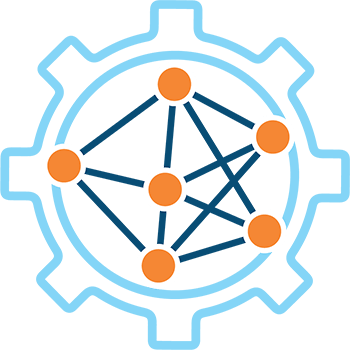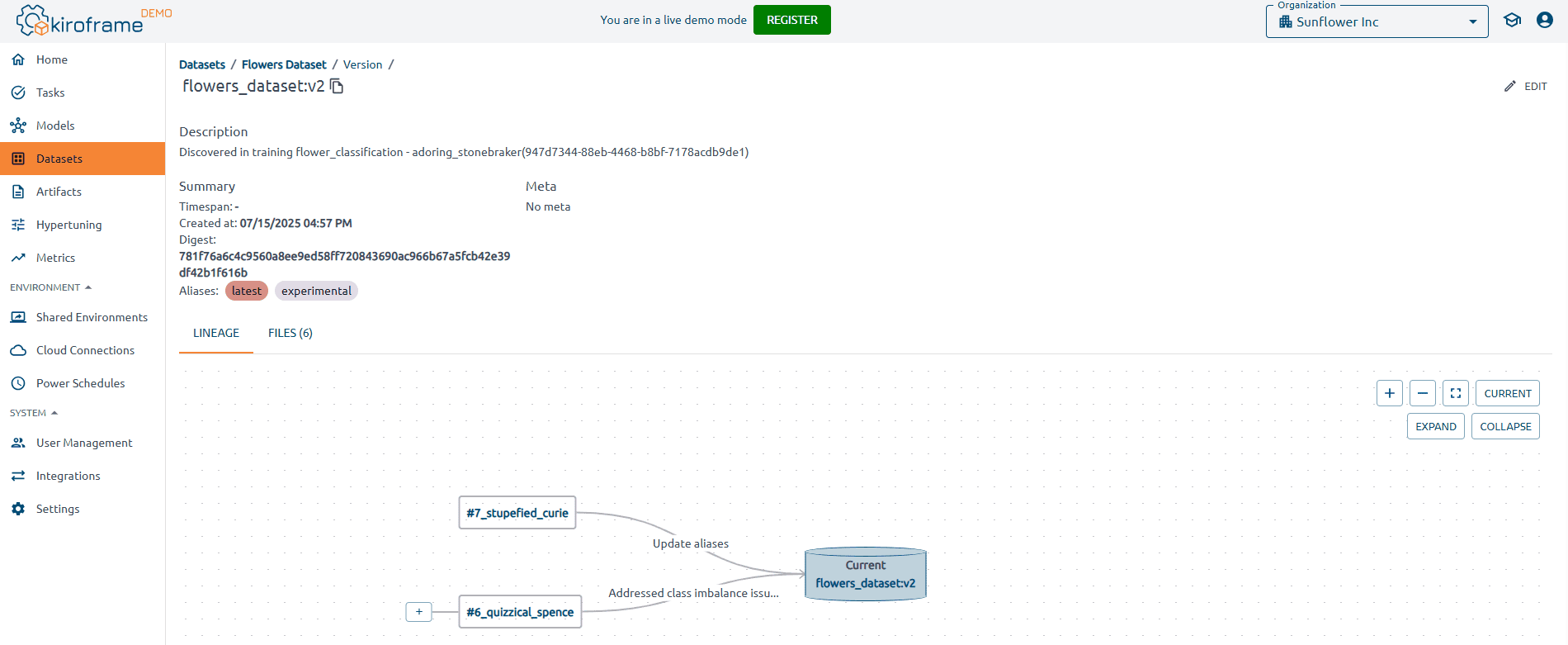How to choose data for machine learning models
- Edwin Kuss
- 4 min
Data is of immense importance in machine learning. A top-notch training dataset is the cornerstone of successful machine-learning endeavors. It significantly impacts the accuracy and efficiency of model training while also playing a pivotal role in ensuring fairness and impartiality in the model’s outcomes. Let’s delve into the best practices and considerations when selecting or preparing a dataset for training machine learning models applicable to structured numerical and unstructured data like images and videos.
With Kiroframe’s dataset tracking and management, teams can go beyond static datasets by versioning changes, linking datasets to model runs, and monitoring usage over time. This ensures data choices remain transparent, reproducible, and aligned with production needs.
Examining the dataset’s distribution is crucial, particularly for numerical data. Analyzing the frequency distribution, which illustrates how often each value appears in the dataset, provides valuable insights into the problem at hand and the distribution of classes. ML practitioners usually aim for datasets with a normal distribution to ensure adequate data points for model training.
While a normal distribution is prevalent in natural and psychological phenomena, it’s not a prerequisite for every dataset used in model training. Real-world datasets may not conform to the classic bell curve, and that’s perfectly fine.
By tracking dataset versions and attaching metadata in Kiroframe, teams can document how distributions evolve over time, making it easier to compare experiments and avoid silent shifts in data quality.
Is the data representing reality?
Machine learning models are designed to tackle real-world issues, so it’s essential that the data they’re trained on mirrors reality. While synthetic data can be used when gathering more data is challenging or to balance classes, relying solely on real-world data enhances the model’s robustness during testing and production. Simply inputting random numbers into a machine-learning model won’t magically solve your business problems with 90% accuracy!
Kiroframe enables linking real-world datasets directly to training runs, ensuring validation and testing are always performed against the correct data snapshot — not outdated or mismatched inputs.

Does the data align with the context?
It’s crucial to ensure that the dataset used for model training reflects the conditions the model will encounter in production. For instance, if we’re training a computer vision model for a mobile app that identifies tree leaves from images taken with a mobile camera, more than using images solely captured in a controlled lab environment will be necessary. The training set should include pictures captured in the wild, resembling real-world scenarios the application will face.
With dataset management in Kiroframe, practitioners can track and tag contextual metadata (such as capture device, environment, or conditions), which makes it easier to curate representative training sets aligned with production realities.
Is there data redundancy?
Data redundancy, or duplicative data points, is critical in ML model training. When the dataset contains repeated data points, the model may overfit those points, leading to poor performance during testing (often resulting in underfitting).
Kiroframe helps mitigate redundancy by providing visibility into dataset usage and versions, allowing teams to identify unnecessary duplicates across experiments and maintain lean, effective datasets.
Is the data biased?
A biased dataset can never yield an unbiased, trained model. Selecting a balanced dataset that doesn’t favor particular cases is essential. Consider a supervised computer vision model designed to identify gender based on facial features. If the model is trained exclusively on images of individuals from the USA but deployed globally, it will produce unrealistic predictions due to its bias towards a specific ethnicity. The training set should include pictures from diverse ethnicities and age groups to mitigate bias.
Kiroframe adds transparency by tracking dataset lineage and metadata, which helps teams verify diversity in training data and reduce hidden biases before deployment.
Is there an optimal amount of data?
Determining the ideal data for training a model requires a lot of work. Deep learning models, in particular, work effectively with large data sets that allow them to capture complex nonlinear relationships. However, an excess of data can lead to increased training time without necessarily improving the accuracy of the model. Too much data can lead to overfitting, where the model performs well on training data but fails on unknown data. For effective model training, it is crucial to find the right balance and ensure sufficient data from all classes, including outliers.
By linking datasets to model runs and monitoring dataset growth, Kiroframe provides a clear record of what data was used, when, and how much — enabling teams to balance dataset size against performance while ensuring experiments remain reproducible.

Optimize ML/AI development with Kiroframe software. Identify bottlenecks and get practical recommendations for achieving maximum performance and efficiency → Try it out in Kiroframe live demo

